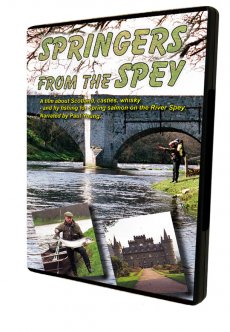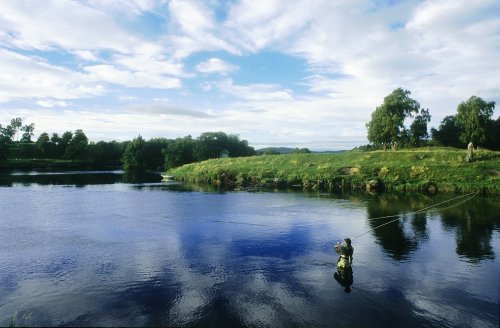There aren't many places in the world that are synonymous with a particular style or method of fishing; but there can be few salmon anglers who are not aware of, or aspire to be proficient at, Spey casting.
There aren't many places in the world that are synonymous with a particular style or method of fishing; but there can be few salmon anglers who are not aware of, or aspire to be proficient at, Spey casting. There are two basic Spey casts - the single Spey cast and the double Spey cast. Both are roll casts, taking advantage of a loop of line to load the rod, rather than a back cast to transfer forward movement into the line. Spey casting comes into its own when there are strong winds, which could bring the fly dangerously close to the angler, or when banks or trees behind the casting position prevent a full overhead cast.
To execute a single Spey cast, the rod is drawn upstream to bring the fly and line to the surface of the water so that it lifts off easily. The fly should be made to sit a few feet upstream of the rod tip and a little beyond it. To do this you may have to shorten line by drawing it 'to hand' through the rings - it will be made to 'shoot' later. Don't overdo the retrieval of line - you need sufficient to load the rod properly. The aerialised loop of line may now be rolled forward in a continuous smooth, but firm casting action. This lifts the line off the water and propels it forward, rolling parallel to the surface. Sounds straightforward and it is, once you get your timing right.
The double Spey cast requires that the fly be placed downstream of the rod - if it isn't you will hook the line on casting. Similarly to the single Spey cast, the rod is raised to draw the fly and line to the surface, ready to be lifted off. Then you form a wide loop of line by drawing the rod across in front of you, starting low and lifting the rod tip progressively. This loop will load the rod when you now flex it against the loop's weight, rolling the line out and lifting the fly off the water to land many yards away.
Timing is of paramount importance. Cast too soon, and the rod has insufficient weight of line to load it fully and power is lost. Too late and the loop falls back into the water and the hook sinks, making the job of propelling it forward a lost cause. In these circumstances - try again, all is not lost. When it does roll out nicely, a Spey cast gives a warm tingle of pleasure. When the line then stops in its downstream travel and powerful tugging starts, the warm feeling is replaced by that of excitement.















